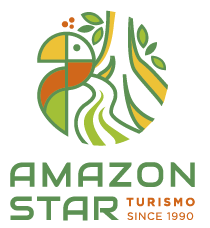Marajó island – close to 50.000 Km2, the largest marine-fluvial island in the world, has an ancient civilization which was famous for its ceramics.
It is divided in two almost equal regions. The eastern half of the island is called the fields region. It is characterized by low-lying fields with savannah type flora, sectioned by strips of remaining forest along the rivers. Various varieties of palm trees and dense mangrove swamps line the coast. The island’s western half, called the forest region, is covered by primary forest.
Marajó has two seasons:the very rainy one from January to June and the dry from July to December.The island’s few roads are elevated three meters. Marajó is supported by the herd of buffaloes and zebus which wander the “campos” (fields) and are well adapted to the wetland conditions.
The island is filled with hundred of bird species such as egrets, flamingos, herons, parrots, ducks, hawks, toucans and the gracefull scarlet ibis with its long curved beak. The sight of a flock of deep-pink ibis flying against Marajó’sgreen backgroung is unforgetable.Alligators,monkeys,capivaras and large anacondas complete the scene for a fantastic photo-safari.
Soure, the island’s principal town, is a little city shaded by mango trees with oxen and buffalos grazing in the streets. Like others coastal cities, it is primarily a fishing village. Marajó is also a paradise for fishermen. You will catch the ferocious piranha or the one and half meter Pirarucu among others.
The best way to discover Marajó is through its “Fazendas” (ranch , farm). With the farmer as a guide, you can discover all the wildlife of the island.Visiting a water buffalo ranch, you will understand why this animal is so useful to the farmers:carrying cowboys, pulling carts and providing the ranch with its milk and meat.
